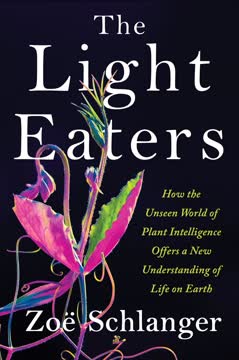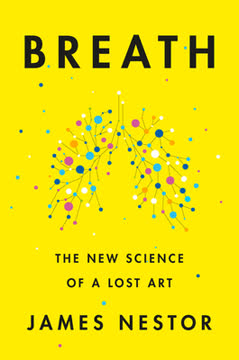Key Takeaways
1. Cannabis: A Misunderstood Medicine with Ancient Roots and Modern Potential
Cannabis has been documented as a medicine that humans have used for at least five thousand years, and possibly much longer.
Ancient wisdom, modern science. Cannabis has been a companion to human civilization for millennia, used for medicinal, spiritual, and practical purposes. Its recent criminalization is a historical anomaly, driven more by political and racial factors than by scientific evidence. Today, we are rediscovering the plant's potential, backed by a growing body of research on its medical applications.
The cannabis plant's complexity. Cannabis contains over 500 different compounds, including cannabinoids like THC and CBD, as well as terpenes and flavonoids. This complexity contributes to its wide-ranging effects and potential therapeutic uses. Different strains or "chemovars" can produce distinct effects, from relaxation and pain relief to creativity and focus enhancement.
2. The War on Drugs: A Costly and Racially Biased Campaign Against Cannabis
There is a disturbing tendency among many neuroimaging drug researchers to interpret any brain differences between drug users and non–drug users as deficits representing substantial loss of function (i.e., brain damage).
Propaganda and prejudice. The War on Drugs, initiated in the 1970s, has been a costly failure, disproportionately affecting communities of color and hindering scientific research. It has perpetuated myths about cannabis's dangers while ignoring its potential benefits.
A legacy of harm. The criminalization of cannabis has led to:
- Millions of arrests, primarily for simple possession
- Racial disparities in enforcement and sentencing
- Blocked research into cannabis's medical potential
- Stigmatization of users and patients
- Wasted resources on enforcement and incarceration
3. The Endocannabinoid System: Our Body's Built-in Cannabis Network
The endocannabinoid system is around five hundred million years old, which is to say, it has been around for roughly two thousand times longer than humans have.
A fundamental biological system. The endocannabinoid system (ECS) is a complex network of receptors and neurotransmitters that plays a crucial role in maintaining homeostasis in the body. It regulates numerous functions, including:
- Mood and emotion
- Sleep
- Appetite
- Pain sensation
- Memory and learning
- Immune function
Cannabis and the ECS. Phytocannabinoids from the cannabis plant, such as THC and CBD, interact with the ECS, mimicking or modulating the effects of our body's own endocannabinoids. This interaction explains many of cannabis's therapeutic effects and potential medical applications.
4. Medical Cannabis: Promising Treatment for Pain, PTSD, and More
Cannabis was associated with a reduction in overall PTSD symptoms and improved QOL [quality of life].
A versatile medicine. Medical cannabis shows promise in treating a wide range of conditions, including:
- Chronic pain
- PTSD and anxiety
- Epilepsy
- Nausea and vomiting (especially in cancer patients)
- Sleep disorders
- Multiple sclerosis symptoms
Evidence and anecdotes. While more rigorous clinical trials are needed, a growing body of research and patient experiences support cannabis's medical potential. Many patients report significant improvements in symptoms and quality of life, often with fewer side effects than traditional pharmaceuticals.
5. Cannabis and Mental Health: A Complex Relationship with Potential Benefits
Cannabis can offer pain relief and has been reported by patients to ease the symptoms and process of opioid withdrawal. It has been used by patients as an "exit drug" to get off of heroin and other opiates.
A double-edged sword. Cannabis's effects on mental health are complex and can vary depending on the individual, dosage, and strain used. While some studies suggest potential risks, especially for adolescents and those predisposed to psychosis, many patients report significant benefits for conditions like anxiety, depression, and ADHD.
Harm reduction potential. Cannabis may help reduce the use of more harmful substances, such as opioids and alcohol. It can also provide an alternative to psychiatric medications with severe side effects. However, more research is needed to fully understand its long-term impacts on mental health.
6. The Cannabis Debate: Reconciling Conflicting Narratives and Evidence
We need to create an untainted measure of cannabis addiction that accommodates the current realities of the drug so as to better target (and not mistarget) treatment.
Overcoming bias. The cannabis debate is often polarized between prohibitionists and enthusiasts, with both sides cherry-picking evidence to support their views. A more balanced approach is needed, acknowledging both potential benefits and risks.
Rethinking research. Many existing studies on cannabis are limited by:
- Bias from War on Drugs-era funding priorities
- Use of low-quality, government-supplied cannabis
- Lack of consideration for medical use and modern consumption methods
- Overreliance on observational studies rather than controlled trials
To move forward, we need more unbiased, high-quality research that reflects real-world cannabis use and medical applications.
7. Legalization: Balancing Regulation, Research, and Social Justice
As legalization spreads across the United States and across the globe, one might be tempted to think that arrests for simple cannabis possession have gone away. Unfortunately, that is not the case.
A paradigm shift. Cannabis legalization is gaining momentum worldwide, driven by changing public attitudes, medical evidence, and recognition of the failures of prohibition. However, the transition presents challenges in balancing public health, industry regulation, and social justice.
Key considerations for legalization:
- Expungement of past cannabis convictions
- Equity programs to address historical injustices
- Regulation of product quality and marketing
- Funding for unbiased research
- Education on responsible use and potential risks
- Taxation and allocation of revenue
8. Cannabis Safety: Understanding Risks for Teens, Pregnancy, and Driving
Until the critical question of harm to teens is finally and fully cleared up, we need to uniformly discourage teen usage.
Protecting vulnerable populations. While cannabis appears relatively safe for most adults, certain groups may face higher risks:
- Adolescents: Potential impacts on brain development
- Pregnant women: Possible effects on fetal development
- Drivers: Impairment of reaction time and judgment
Harm reduction approach. Rather than relying on prohibition, which has proven ineffective, a harm reduction approach focused on education, delayed initiation of use, and responsible consumption is more likely to minimize potential negative impacts.
9. CBD: The Non-Intoxicating Cannabinoid with Wide-Ranging Potential
CBD is considered to be neuroprotective because it is a potent inhibitor of neuroinflammation.
A versatile compound. CBD, or cannabidiol, is a non-intoxicating cannabinoid that has gained widespread popularity for its potential therapeutic benefits. It interacts with multiple biological systems and may help with:
- Anxiety and stress
- Inflammation and pain
- Epilepsy (FDA-approved for certain forms)
- Sleep disorders
- Addiction and withdrawal
Challenges and opportunities. While CBD shows promise, the market is currently under-regulated, leading to quality control issues and misleading claims. More research is needed to fully understand its mechanisms of action and optimal therapeutic uses.
Last updated:
Review Summary
Seeing through the Smoke receives mostly positive reviews, with readers praising its balanced approach to cannabis, exploring both benefits and risks. Many appreciate the author's clear writing style, personal anecdotes, and scientific backing. The book is seen as informative for both medical professionals and laypeople. Some criticize the author's political views and the book's length. Overall, reviewers find it a comprehensive exploration of cannabis, its medical uses, and societal impact, though a few feel it's too detailed or biased.
Similar Books









Download PDF
Download EPUB
.epub digital book format is ideal for reading ebooks on phones, tablets, and e-readers.




